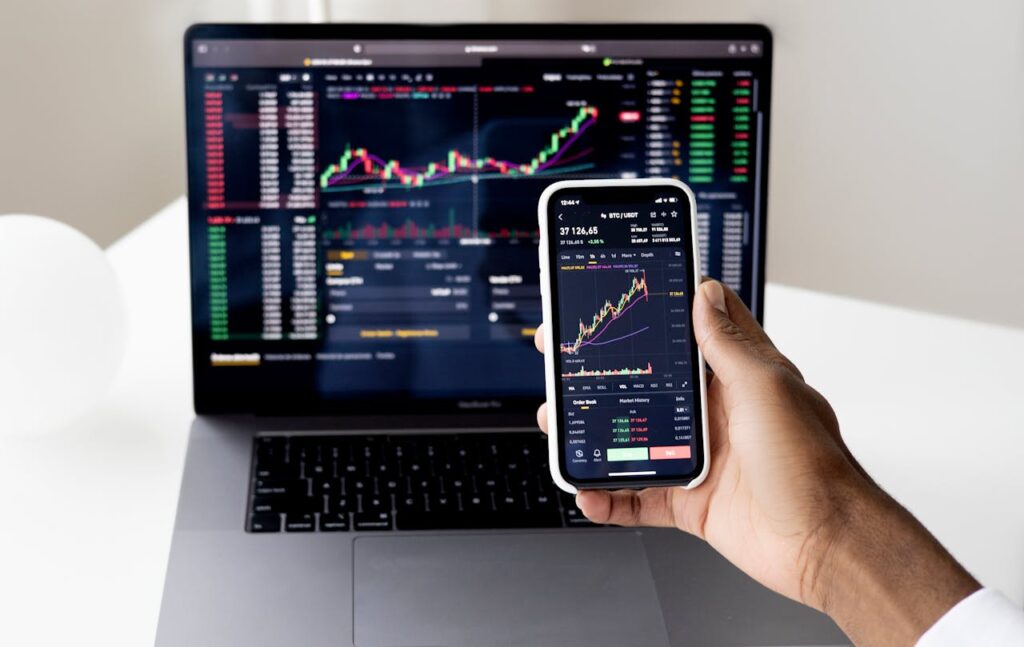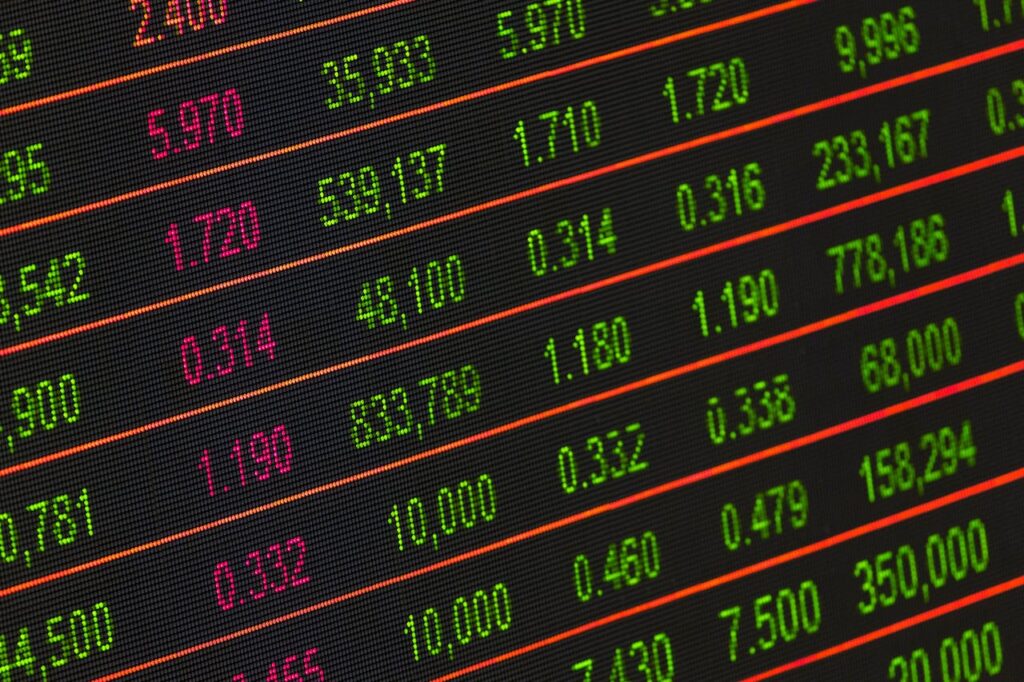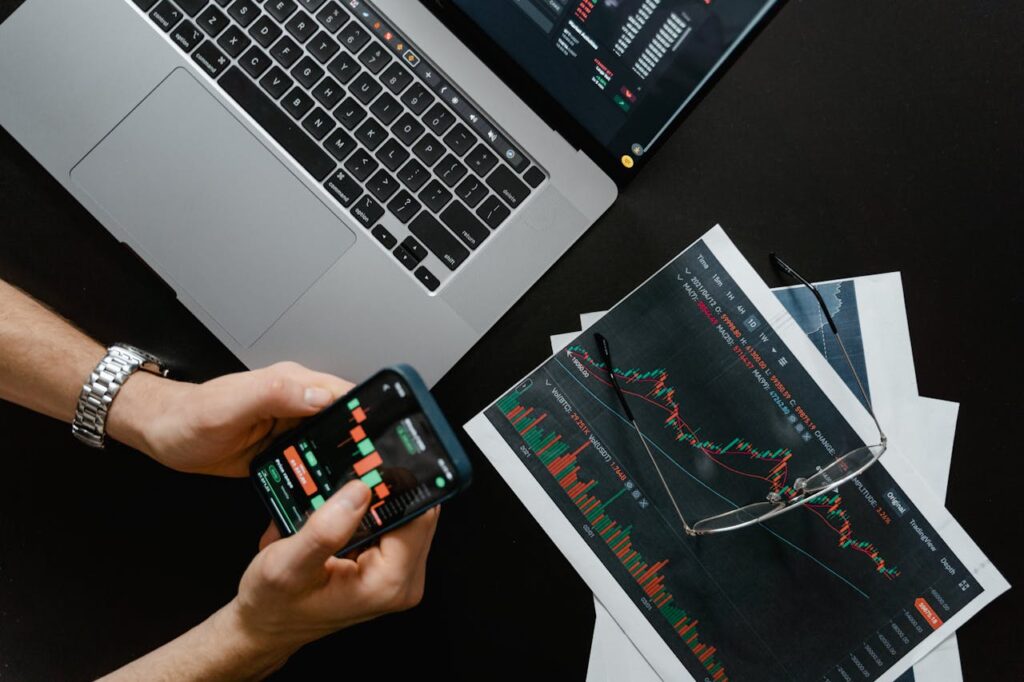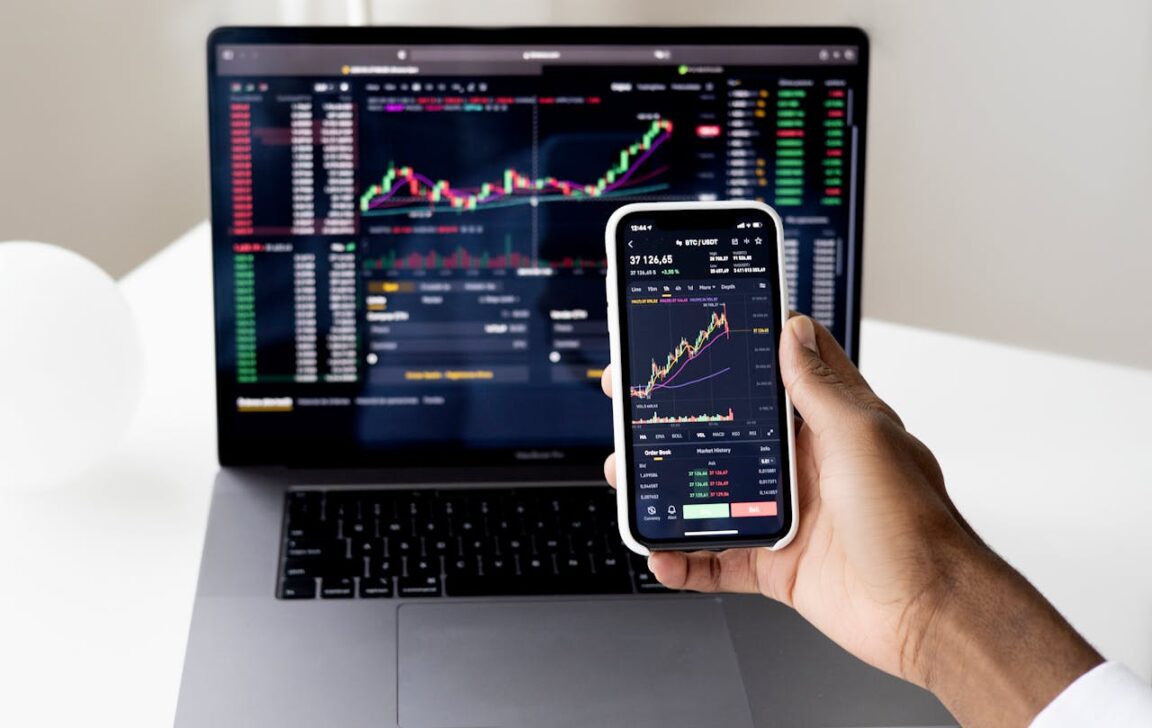In a dramatic turn of events, the Dow Jones Industrial Average plummeted over 1,000 points, reflecting the escalating economic uncertainty gripping the financial markets. This sharp decline underscores the volatility and fragility of the current economic climate, driven by a confluence of factors including rising interest rates, geopolitical tensions, mixed economic data, and investor fears of a potential downturn. This article delves into the causes behind this significant market drop, its implications for investors and the broader economy, and what lies ahead.
Understanding the Dow Jones Drop

The Dow Jones Industrial Average (DJIA) is a stock market index that measures the stock performance of 30 large, publicly-owned companies listed on stock exchanges in the United States. It is one of the most closely watched indices in the world and serves as a barometer of the overall health of the U.S. economy.
The recent drop of over 1,000 points is significant for several reasons:
- Magnitude of the Decline: A drop of this magnitude in a single trading session is rare and signals a high level of market stress and investor anxiety.
- Market Sentiment: Such a steep decline reflects broader concerns about economic stability and future growth prospects.
- Impact on Investments: This fall affects not only individual investors but also institutional investors, pension funds, and retirement accounts, causing widespread financial repercussions.
Key Factors Contributing to the Decline
Several factors have contributed to the recent plunge in the Dow Jones, each amplifying the overall sense of economic uncertainty:
- Rising Interest Rates: The Federal Reserve has been raising interest rates to combat inflation. While higher rates are intended to cool down an overheated economy, they also increase borrowing costs for businesses and consumers, which can slow down economic growth.
- Inflation Concerns: Persistent inflation remains a significant concern. Despite efforts by the Federal Reserve, inflation has not abated as quickly as hoped, leading to worries about prolonged economic challenges.
- Geopolitical Tensions: Ongoing geopolitical issues, such as the conflict in Ukraine, trade tensions with China, and uncertainties in the Middle East, contribute to global instability and market volatility.
- Mixed Economic Data: Recent economic reports have painted a mixed picture. While some sectors show signs of recovery, others are struggling, leading to an uneven economic landscape that fuels uncertainty.
- Corporate Earnings: Mixed corporate earnings reports have also played a role. While some companies have posted strong results, others have missed expectations, creating uncertainty about the overall health of the corporate sector.
- Investor Sentiment: Sentiment among investors has turned cautious. The fear of an economic downturn or recession has led to a sell-off in stocks, as investors seek safer assets or move to cash positions.
Impact on Investors

The steep decline in the Dow Jones has several immediate and long-term implications for investors:
- Portfolio Losses: The most immediate impact is the reduction in portfolio values. Investors holding stocks in the affected companies will see a decrease in the value of their investments.
- Increased Volatility: The decline contributes to increased market volatility. High volatility can be unsettling for investors, leading to more cautious investment strategies or a shift towards less risky assets.
- Investor Confidence: Prolonged market declines can erode investor confidence. A lack of confidence can lead to reduced investment in the stock market, affecting overall market liquidity and stability.
- Retirement Accounts: Many Americans have retirement savings invested in the stock market. A significant drop in the Dow Jones can negatively impact the value of these retirement accounts, potentially altering retirement plans for many.
Broader Economic Implications
The plunge in the Dow Jones also has broader implications for the U.S. economy:
- Consumer Spending: The stock market is often seen as a leading indicator of economic health. A significant decline can impact consumer confidence, leading to reduced spending and slower economic growth.
- Business Investment: Companies may become more cautious with their investments and expansion plans in the face of market volatility and economic uncertainty.
- Monetary Policy: The Federal Reserve may need to reassess its monetary policy stance. If market declines persist, the Fed could potentially slow down or halt interest rate hikes to stabilize the economy.
- Global Markets: The U.S. stock market influences global financial markets. A significant decline in the Dow Jones can have ripple effects across global markets, impacting international trade and investment flows.
What Lies Ahead?
The future direction of the Dow Jones and the broader stock market will depend on several factors:
- Inflation Trends: If inflation shows signs of easing, it could relieve some of the pressure on the Federal Reserve to raise interest rates, potentially stabilizing the market.
- Economic Data: Upcoming economic reports will be closely watched. Positive data could restore some investor confidence, while negative data could exacerbate market declines.
- Geopolitical Developments: Any resolution or escalation of geopolitical tensions will significantly impact market sentiment. Stability in global politics could lead to a more stable market environment.
- Corporate Earnings: The performance of companies in the next few quarters will be critical. Strong earnings could bolster investor confidence, while weak earnings could lead to further declines.
Detailed Analysis of Contributing Factors

To provide a comprehensive understanding, let’s delve deeper into the specific factors contributing to the recent Dow Jones decline.
Rising Interest Rates
The Federal Reserve’s decision to raise interest rates has been a central focus in the fight against inflation. By increasing rates, the Fed aims to reduce the money supply, making borrowing more expensive. This strategy is intended to cool down consumer spending and business investments, thereby reducing inflationary pressures. However, higher interest rates also mean increased costs for mortgages, loans, and credit, which can slow down economic growth. Businesses may delay or scale back expansion plans due to higher financing costs, while consumers might reduce spending on big-ticket items like homes and cars.
Inflation Concerns
Inflation has been a persistent issue, with prices rising across various sectors, from groceries to gasoline. The Consumer Price Index (CPI) and Producer Price Index (PPI) have shown elevated inflation rates, causing concern among policymakers and investors. Despite the Federal Reserve’s efforts, inflation has not declined as rapidly as expected. High inflation erodes purchasing power, reducing consumer confidence and spending. It also puts pressure on businesses to raise wages, which can lead to higher production costs and, subsequently, higher prices for goods and services.
Geopolitical Tensions
Geopolitical tensions have a profound impact on financial markets. The ongoing conflict in Ukraine has created significant uncertainty, affecting global energy supplies and commodity prices. Trade tensions with China, particularly around technology and tariffs, add to the complexity, impacting supply chains and corporate earnings. In the Middle East, instability and conflicts can influence oil prices, leading to broader economic implications. These geopolitical issues contribute to market volatility as investors react to news and potential risks.
Mixed Economic Data
Recent economic data has presented a mixed picture of the U.S. economy. While certain sectors, such as healthcare and construction, show robust growth, others, like the information sector, are struggling. The labor market also reflects this disparity, with overall job gains but an increase in the unemployment rate. Consumer spending remains strong in some areas but shows signs of weakening in others. This uneven recovery creates uncertainty about the future trajectory of the economy, leading to cautious investor behavior.
Corporate Earnings
Corporate earnings reports are a critical indicator of economic health. In recent quarters, earnings have been mixed, with some companies exceeding expectations and others falling short. Factors such as supply chain disruptions, rising input costs, and changing consumer behavior have impacted corporate performance. Investors closely monitor these earnings reports to gauge the health of the corporate sector and make informed investment decisions. Disappointing earnings can trigger sell-offs, contributing to market declines.
Investor Sentiment
Investor sentiment is a key driver of market movements. Currently, sentiment is marked by caution and uncertainty. Fears of an economic downturn or recession, driven by the aforementioned factors, have led investors to seek safer assets or move to cash positions. This risk-averse behavior contributes to selling pressure in the stock market, exacerbating declines. Positive news or data could help improve sentiment, but sustained negative trends may lead to prolonged market volatility.
Implications for Different Stakeholders

The decline in the Dow Jones has varied implications for different stakeholders, from individual investors to policymakers and businesses.
Individual Investors
For individual investors, a significant market decline can be distressing. Portfolio values drop, potentially affecting long-term financial goals like retirement savings. It’s crucial for individual investors to maintain a diversified portfolio to mitigate risks and consider long-term investment strategies rather than reacting impulsively to market fluctuations.
Institutional Investors
Institutional investors, including pension funds and mutual funds, manage large pools of assets. Market declines can significantly impact their portfolios, affecting returns for beneficiaries. These investors often have sophisticated risk management strategies in place but must navigate the complexities of volatile markets while meeting their fiduciary responsibilities.
Policymakers
For policymakers, market volatility adds
to their challenges, as they seek to implement measures to stabilize the economy. The Federal Reserve, in particular, may need to adjust its monetary policy in response to persistent market volatility. This could involve reevaluating interest rate hikes or considering other tools to support economic growth and stability.
Businesses
Businesses face several challenges in the current environment. Higher borrowing costs, supply chain disruptions, and shifting consumer behavior require companies to be agile and strategic. Businesses may delay investments or expansion plans due to economic uncertainty, impacting overall economic growth. On the other hand, companies that can adapt quickly and manage costs effectively may find opportunities even in a volatile market.
Looking Ahead: Potential Scenarios and Strategies
The future direction of the Dow Jones and the broader stock market will be influenced by several key factors. Here are some potential scenarios and strategies that investors and stakeholders should consider:
Scenario 1: Inflation Eases
If inflation begins to ease, it could reduce the pressure on the Federal Reserve to continue raising interest rates aggressively. This scenario would likely improve investor sentiment and stabilize the stock market. Investors should monitor inflation indicators closely and consider adjusting their portfolios to benefit from sectors that may perform well in a lower inflation environment.
Scenario 2: Continued Geopolitical Tensions
Ongoing geopolitical tensions, particularly between major economies like the U.S. and China, could continue to impact global markets. In this scenario, investors may need to adopt a more defensive investment strategy, focusing on sectors that are less exposed to international trade and geopolitical risks. Diversifying investments across different asset classes and regions can also help mitigate risks.
Scenario 3: Mixed Economic Data
If economic data continues to be mixed, with some sectors performing well and others struggling, investors will need to be selective in their investment choices. Conducting thorough research and focusing on companies with strong fundamentals and growth potential will be crucial. Additionally, maintaining a balanced portfolio that includes both growth and value stocks can help navigate uncertain economic conditions.
Scenario 4: Federal Reserve Policy Changes
The Federal Reserve’s actions will be a significant driver of market sentiment. If the Fed decides to pause or slow down interest rate hikes, it could provide a boost to the stock market. Conversely, if the Fed continues with aggressive rate hikes, it could lead to further market declines. Investors should stay informed about Fed announcements and consider the potential impacts on different sectors and asset classes.
Long-Term Investment Strategies
In the face of market volatility, maintaining a long-term perspective is essential. Historical data shows that the stock market tends to recover from downturns over time. Long-term investors should avoid making impulsive decisions based on short-term market movements. Instead, focusing on a diversified portfolio, regularly reviewing investment goals, and staying informed about economic and market trends can help achieve financial objectives.
Conclusion
The recent plunge of over 1,000 points in the Dow Jones Industrial Average is a stark reminder of the current economic uncertainty and market volatility. Driven by a combination of rising interest rates, inflation concerns, geopolitical tensions, mixed economic data, and cautious investor sentiment, this decline highlights the complexities and challenges facing the global economy. For investors, businesses, and policymakers, navigating this environment requires careful consideration of risks, strategic planning, and adaptability. By staying informed and maintaining a long-term perspective, stakeholders can better position themselves to weather the storm and capitalize on potential opportunities in the future.

